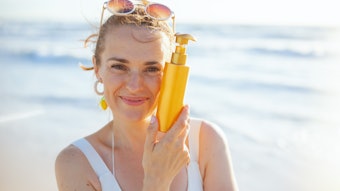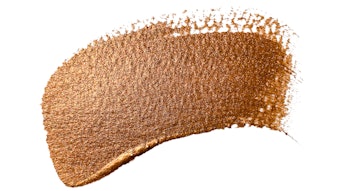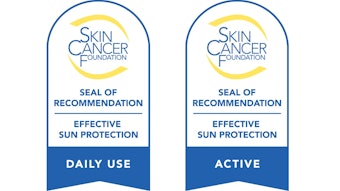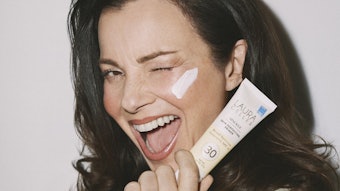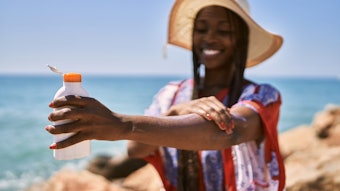
What are the differences between traditional sunscreen formulations and modern ones? Broader protection, for one, including against heat and visible light.
Alexandra Lunan, Ph.D., of Shanghai PECHOIN Daily Chemical Corp., explained, in this interview with Tony O'Lenick. Lunan received the DGK's (German SCC's) 2018 Innovation Golden Award for an innovative cooling sunscreen to protect Asian skin in the visible and near-infrared spectrum. According to a previous report, this approach was taken since it is know that damage is caused not only by UV-induced erythema, but also by increased amounts of free radicals formed by solar radiation in both the visible and infrared regions of the spectrum.
Backdrop for Damage
Lunan explained, "Moderate exposure to the sun is essential for our health and well-being, and in particular, UVB radiation is needed for vitamin D synthesis. However, excessive exposure to the sun may cause erythema (sunburn), skin damage and the development of free radicals, if its dose is higher than a critical value. In general, free radicals are needed in the body for the regulation of many physiological processes, such as cell communication and signal transduction. However, a too-high number of free radicals can cause oxidative stress, immune suppression, premature skin aging and skin cancer.1, 2
"With steadily improving sunscreens that protect in the UV region, a reduction in skin cancer rates could be expected. However, statistics show annually increasing incidence rates for melanoma and non-melanoma skin cancer worldwide. Nowadays, it is known that 50% of the free radicals produced in the human skin by sun radiation are formed by visible (VIS) and infrared (IR) light.3, 4 Thus, for these spectral regions, efficient protection also is needed. A consistent skin protection against UV and VIS/NIR irradiation can counteract both skin damage and photoaging."
Formulating Solutions
She continues, "For the development of sunscreens in the visible and NIR regions, it is to be considered that chemical filter substances cannot be applied in these spectral regions, as chemical filters would color the sunscreen and the skin. Thus, different strategies for sun protection have to be applied. As one possibility, TiO2 pigments can be used in a modified way, promoting strong reflection and scattering properties in the visible and infrared spectral regions.
'A consistent skin protection against UV and VIS/NIR irradiation can counteract both skin damage and photoaging.'
"Antioxidants of natural origin are highly capable of protecting the metabolism against the development of free radicals. Therefore, an addition of natural antioxidants with high radical protection factors to the sunscreen formulations should be the priority. It could be demonstrated that the higher the radical protection factor (RPF) value, the higher the content of antioxidants and the better the protection against free radical production in the skin."
Scattered, Natural and Cooling Solution
In conclusion, the difference between the proposed sunscreen formulation and other sunscreen formulations is that the former provides a multi-faceted approach, protecting against more than just UV.
Lunan adds, "The approach we recommend is advanced sun protection realized by the application of special TiO2 pigments that provide high scattering properties in the visible and infrared spectral regions. To support the mode of action, the sunscreen innovation also contains plant extracts, providing high antioxidative protection, which are well-known from Traditional Chinese Medicine (TCM)."
Example extracts given from TCM with high radical protection properties, include: green tea extract, Scutellaria baicalensis extract, Saussurea involucrata extract, Leucojum aestivum bulb extract, Astragalus membranaceus root extract, Saposhnikovia divaricata root extract, Calendula officinalis flower extract, Albizia julibrissin flower extract and Gastrodia elata root extract. Alcohol and menthol were used to cool the skin during the irradiation of the sun.
Concluding Remarks
As a final comment, Tony O'Lenick remarks, "Thank you for your contribution. I believe that one of the most important developments we face in our industry is developing technology and formulation platforms that can be adapted using minimally disruptive technology to meet the requirements of specific markets. Your approach certainly is moving in that direction. Thank you again."
